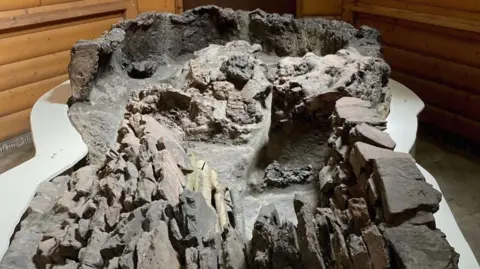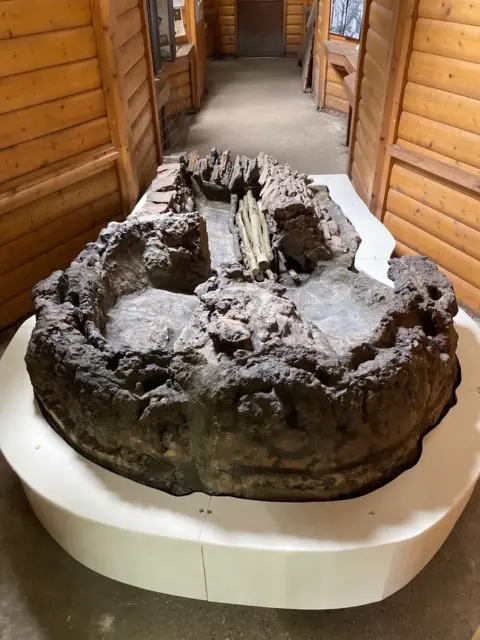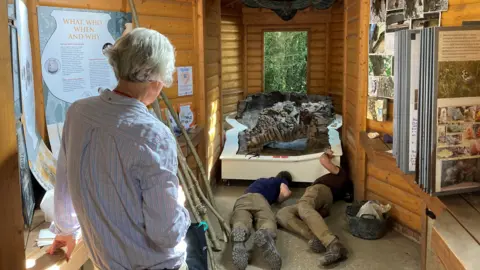Ancient Roman kiln goes on display for first time
 City of London Corporation
City of London CorporationAn ancient Roman kiln to go on display in north London for the first time following extensive restoration work.
The kiln, first unearthed by archaeologists in 1968, is said to be the most complete Roman pottery kiln discovered in London.
It is going on display as part of the Highgate Wood Community Heritage Day before getting its own dedicated visitor centre.
Haringey Council, which received a £243,550 grant from the National Lottery Heritage Fund for the kiln's restoration, said it hoped it would act as a "great tourist attraction" for the area.
The kiln is thought to be the last built by Roman potters who worked in Highgate Wood between AD50 and AD160 to supply Londinium, the capital of Roman Britain.
 City of London Corporation
City of London CorporationIn Roman times, a kiln was used to fire pottery, hardening the clay into durable ceramic items like pots, tiles, and other everyday objects.
Haringey Council’s Labour deputy leader Sarah Williams said: “With Haringey gearing up to be the London Borough of Culture in 2027, it’s fantastic that the newly restored Roman kiln is making a long-awaited return to its rightful place after a 56-year absence.”
 City of London Corporation
City of London CorporationAs part of the heritage day, a replica kiln will be fired, demonstrating how the original kiln would have operated.
William Upton KC, chair of the City of London Corporation’s (CLC) Hampstead Heath, Highgate Wood and Queen’s Park Committee, said: "Until recently, the pieces of this extraordinary find have been inaccessible to the public.
"It will be the only pottery kiln of its kind to be exhibited anywhere in the country."
He added that the CLC, which manages Highgate Wood, would turn the information hut where the kiln is being exhibited into a dedicated visitor centre.
Listen to the best of BBC Radio London on Sounds and follow BBC London on Facebook, X and Instagram. Send your story ideas to hello.bbclondon@bbc.co.uk